Since work-from-home and work-outside-the-office seem poised to become long-term (maybe permanent) features of our existence, we think it’s time to get schooled on how to ensure that we can get our work done from the great outdoors. Whether it’s our backyard, a rooftop terrace, our favorite beach or a tent in the mountains, how can we access the internet effectively and find a WiFi hotspot when working outdoors? Our ace tech correspondent Tomas White has answers.
Outdoor WiFi could be the ultimate luxury tech right now
With many workplaces still closed, and many homes still overrun with kids engaged in remote learning, lots of us have been forced find creative places to work at home. Like the basement, the laundry room, and occasionally even the front seat of our cars.

How to get the best internet WiFi access, perhaps via a hotspot, while working outdoors.
Even those of who do have a proper home office are weary of the same-old-same-old. So while the weather is still so nice, why not take advantage of the opportunity to work outside? Winter is coming, so it seems sensible to soak up the sun while we can.
[white_box]Join our community
For access to insider ideas and information on the world of luxury, sign up for our Dandelion Chandelier newsletter. And see luxury in a new light.
sign up now >
[/white_box]
But what about WiFi, you say? We’ve got a plan for that. Whether you are conducting a Zoom call on a floating pool lounger or working on your building’s rooftop sundeck, we have answers on how you can best gain access to the internet and WiFi outdoors, no matter where you decide to set up shop.
How to Get the Best Internet Access while Working (or chilling) Outdoors
There are two basic categories of outdoor WiFi. When working (or binge-watching your favorite Netflix series) from home, a WiFi mesh network will best enable you to get fast Internet access within a reasonable radius outdoors. Alternatively, if your preferred office is a green swath of lawn in Central Park, and there is no Wi-Fi, then you should invest in a hotspot.
[white_box]Related Post
how to make the backyard the best room in your house
read more >
[/white_box]
The Best Wifi Mesh Systems
A mesh Wi-Fi network consists of a router that you plug into your ISP or cable company’s modem. Then you just place a series of satellite modules around your property. Not only do you get a strong and stable connection, you can also significantly increase the area with accessible WiFi reception. Making this best method to gain reliable internet access outdoors.
The best thing about mesh networks? They are pretty much plug and play (unlike the old finicky WiFi range extenders). Depending on your needs, here are four WiFi mesh systems to consider.

The best ways to access the Internet and gain a strong WiFi signal, perhaps via a hotspot, while working outdoors.
1. Best Overall: the eero Pro
Recently purchased by Amazon, the eero Pro is likely to be the ideal solution for most of us when it comes to the best internet access outdoors. With its incredibly intuitive app, it is easy to learn how to set up the network and identify where best to place the satellites. The app has strong security features and immediately lets you see all devices on the network. We like the nifty features, such as the ability to turn off WiFi access to your kid’s tablet with a touch of a button. And for those working outside with family members around, the eero Pro provides the option of prioritizing bandwidth to support your Zoom call, rather than for an online game one of your kids may be playing.
From a design perspective, the eero Pro is sleek and unobtrusive, with a clean, minimalist design. In addition, the eero is the only WiFi mesh system on our list that plays well with Apple’s HomeKit and Amazon’s Alexa. Integration with these platforms allows smart home device to be fire-walled from each other, and allows you much greater control of who can access these devices remotely.
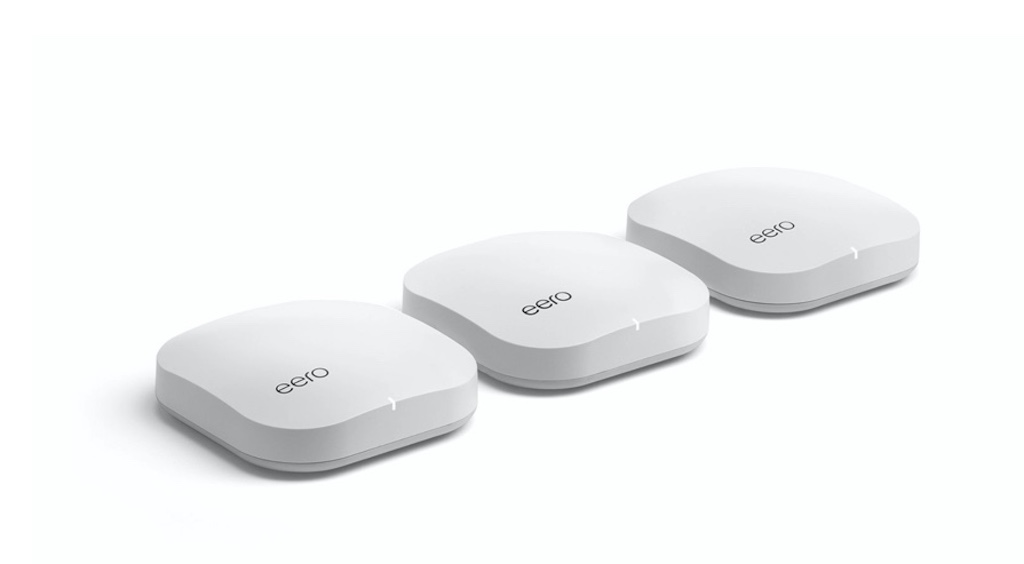
BUY NOW $499.
[white_box]Related Post
how to master videoconferencing from home
read more >
[/white_box]
2. Best for Features: Google Nest WiFi
The Google Nest is a close cousin of the eero Pro, and it may be hard to choose between the two. The Nest has a reputation for being slightly faster than the Eero Pro, but it is not quite as stable, and might require the rare reboot. Making it just a slight runner-up for the best internet access outdoors.
The Nest WiFi satellites double as smart speakers that can play music and respond to voice commands. For interior design aficionados, the satellites come in three sophisticated colors: “snow”, “sand”, and “mist”. (For mere mortals that is white, pastel-pink, and grayish-blue). Parental controls are embedded without the need for an extra subscription service. One “wow” feature that we love on the Nest app is the ability to broadcast a voice message from outside to the satellite in the kitchen (“Please bring a glass of Chardonnay to the pool!”). It can also play a tune for 20 seconds to help kids wash their hands for a sufficient length.
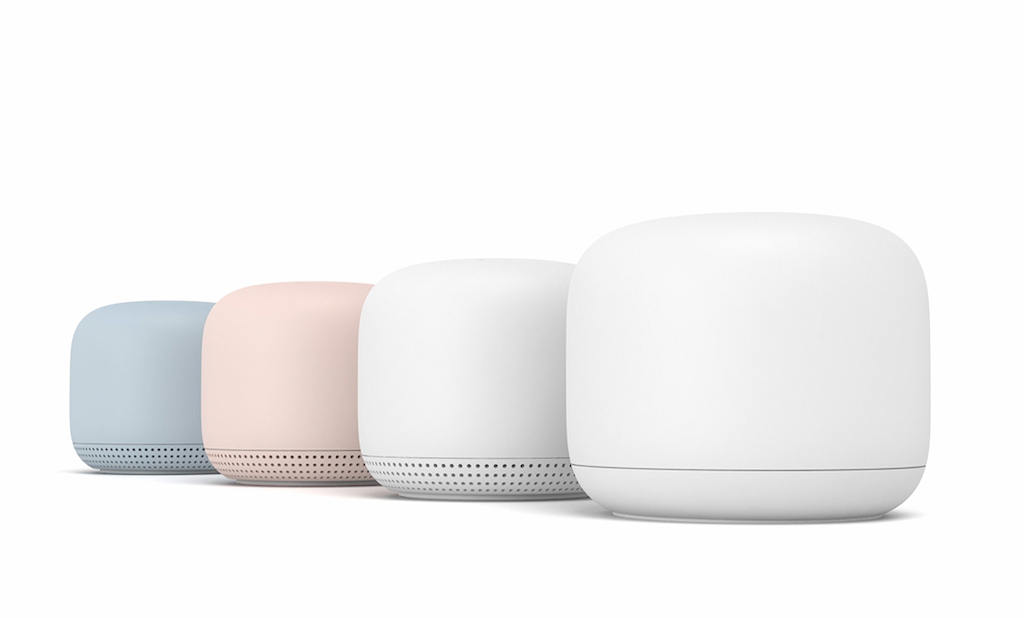
BUY NOW $349.
[white_box]Related Post
the best luxury sound systems and speakers right now
read more >
[/white_box]
3. Fastest: Netgear Orbi 6
If speed is critical for you, then the Netgear Orbi 6 is the mesh system to get for the best internet access outdoors. The other mesh networks on our list cannot handle speeds over 500 Mbps. While there are very few laptops or devices that handle speeds above that, if you have a Gigabit Fiber Internet connection and devices capable of handling this bandwidth, then this is the system for you.
As a legacy hardware manufacturer, however, Netgear is not quite as good in software implementation as its competitors. While the app is adequate, it is not nearly as user friendly as other options. It also lacks some key features, such as parental controls.
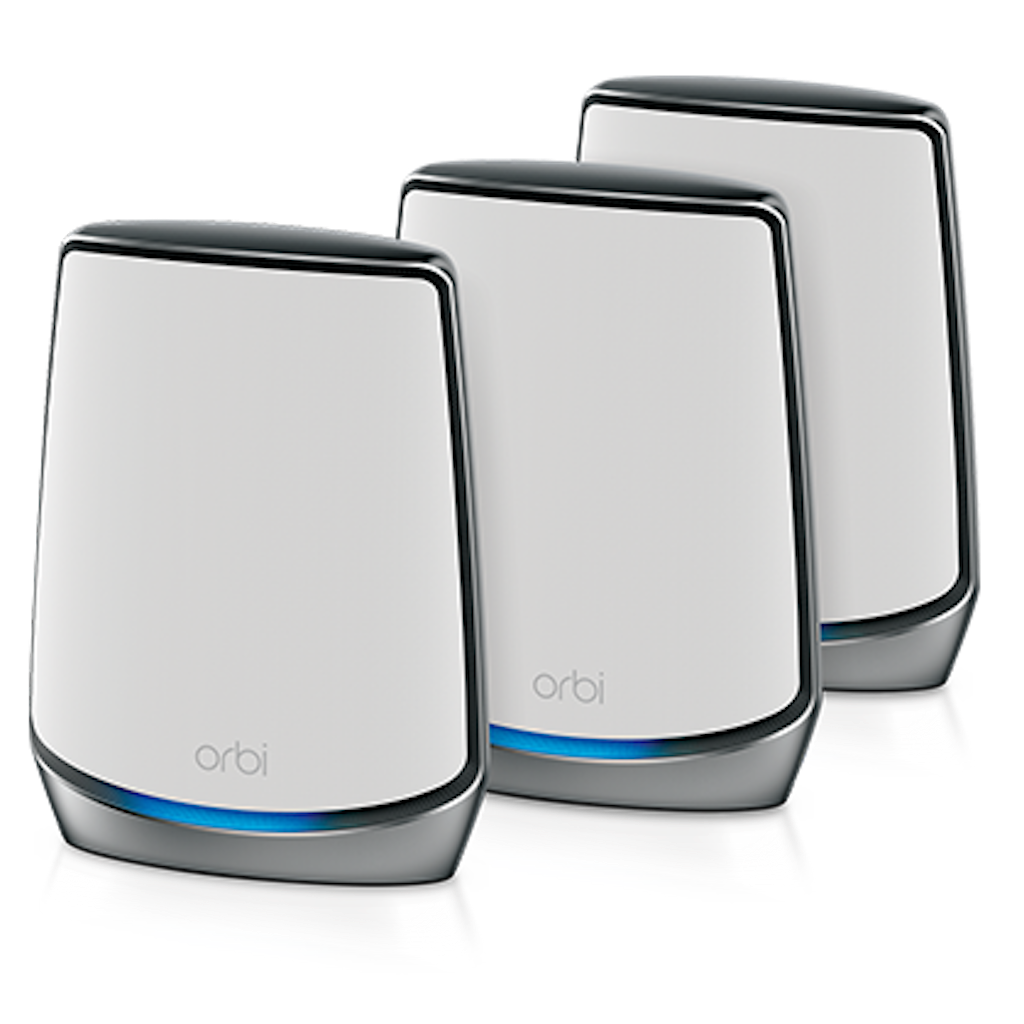
BUY NOW $699.99.
[white_box]Related Post
what are the best luxury headphones for traveling?
read more >
[/white_box]
4. Best For Remote Structures: Netgear Orbi Outdoor WiFi Range Extender
The previous mesh systems on our list will extend your WiFi to the pool or patio; however, they all need to be plugged-in inside. So if your aim is convert a barn or cottage over a thousand feet away from your home into your summer office, then you need a mesh satellite that can be placed outdoors. One that can brave inclement weather, as well as extremes of cold and heat. The Orbi Outdoor WiFi Range Extender is not a standalone mesh system. But it can act as a satellite within the standard Orbi Mesh WiFi AC3000 system. As with the Orbi 6, the hardware is excellent, but the ease of use is not quite as good as other competitor’s products.
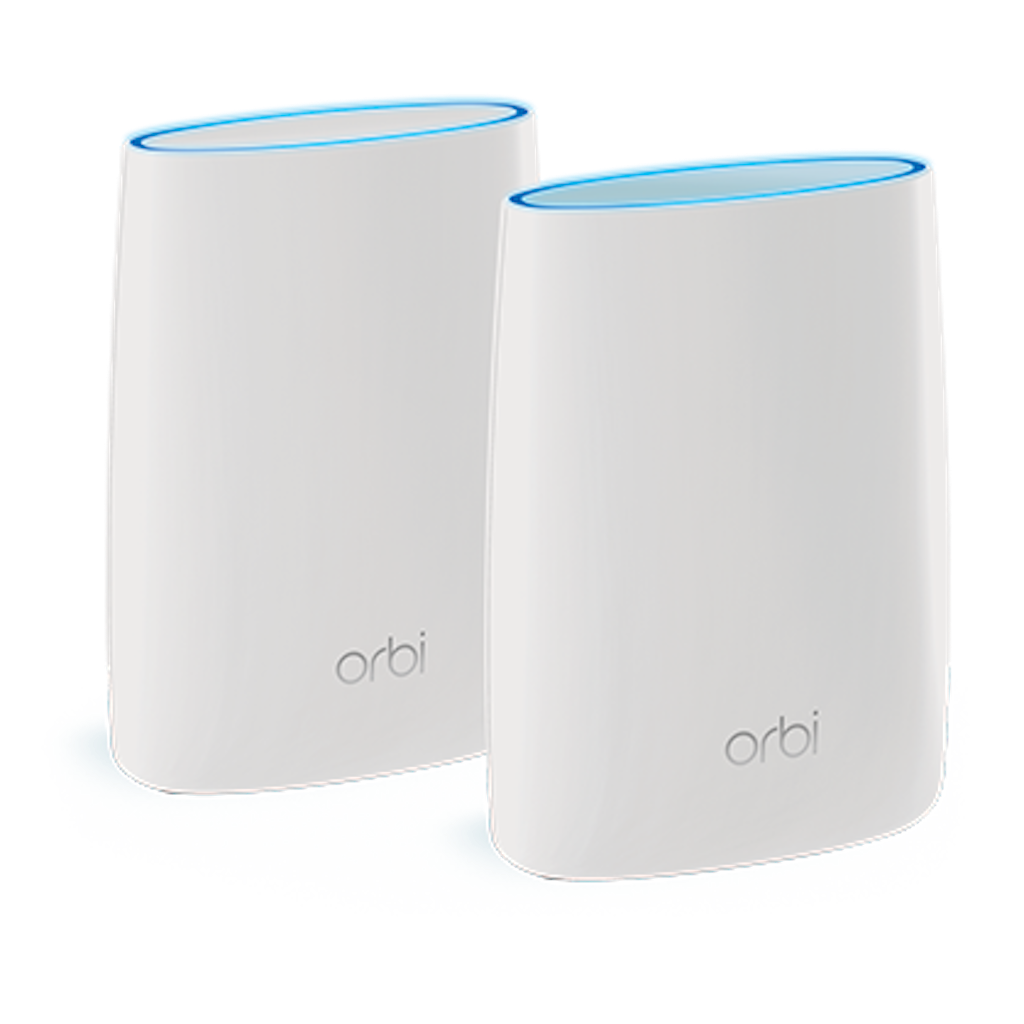
Orbi Mesh WiFi AC3000 System. BUY NOW $369.99.
Orbi Outdoor WiFi Range Extender. BUY NOW $349.99.
How to Purchase a Hotspot
If extending an existing WiFi signal is not an option, you can still work in your favorite outdoor café. You just need to buy a hotspot to ensure WiFi access outdoors, and here’s how. A hotspot is a device that relies on a wireless network such as Verizon or ATT to provide internet access.
Many smartphones are embedded with the ability to create a hotspot. But there are distinct advantages to buying a dedicated hotspot device. Like all-day batteries; the ability to connect more devices; the ability to use an Ethernet jack; faster speeds; greater security; and better data plans. A lot of cell phone data plans reduce your internet speed after you have downloaded a threshold amount of data (even if you technically have unlimited data); dedicated hotspot data plans will not do this.
[white_box]Related Post
the best gifts in luxury tech this year
read more >
[/white_box]
The only 5G option: Verizon 5G MiFi
The arrival of 5G networks is going to revolutionize the use of hotspots. In theory, 5G will be able to provide download speeds exponentially faster than 4G. The current reality, however, is that Verizon is the only carrier that offers a 5G WiFi hotspot that reliably works outdoors; how to determine whether its right for you depends on where you live. The service is only available in limited zones within 19 U.S. cities. (You can find their coverage map here.)
If you do happen to work in area with 5G coverage, then your choice of hotspot is clear: the Verizon 5G MiFi M1000. While the WiFi network this hotspot creates is capped at 350Mbps, that is still blazing fast.
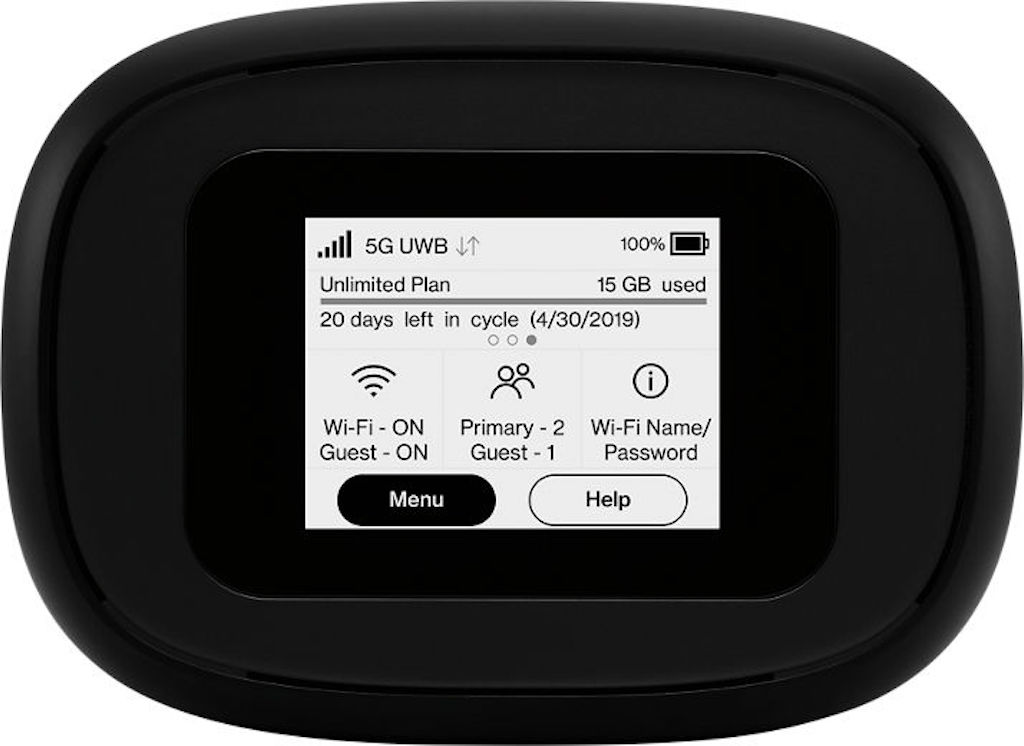
BUY NOW $649, not including plan.
The Top 4G Options
For those stuck with 4G speeds, don’t despair: it’s not so bad. While you might not be able to hold top-quality video conferences from a cafe, you’ll be able to send and receive emails and conduct basic tasks.
There’s one key thing to know when deciding which option is best. Hotspot efficacy is highly situational: its dependent on how good the reception of a particular carrier is in the locations where you plan to use it.
1. Best Overall: Verizon Jetpack MiFi 8800L
If you get equally good reception from all the large carriers in the U.S., we suggest you go with Verizon. The Verizon Jetpack MiFi 8800L consistently gets the best reviews from the consumer tech press. It has a great battery, and can even be used to charge your phone. The device can handle up to 15 devices simultaneously and has a very fast network speed.

BUY NOW $199.99.
2. Best for AT&T service areas
If AT&T is the best carrier your location, then we recommend the ATT Nighthawk LTE Mobile Hotspot Router. This hotspot differentiates itself by having multiple ports to connect to all kinds of devices. It even has a memory slot, which you can turn into a portable music library. It also provides very fast WiFi speeds. A drawback to this hotspot is that it does not have a touch screen; you have to use a connected-device to configure it.
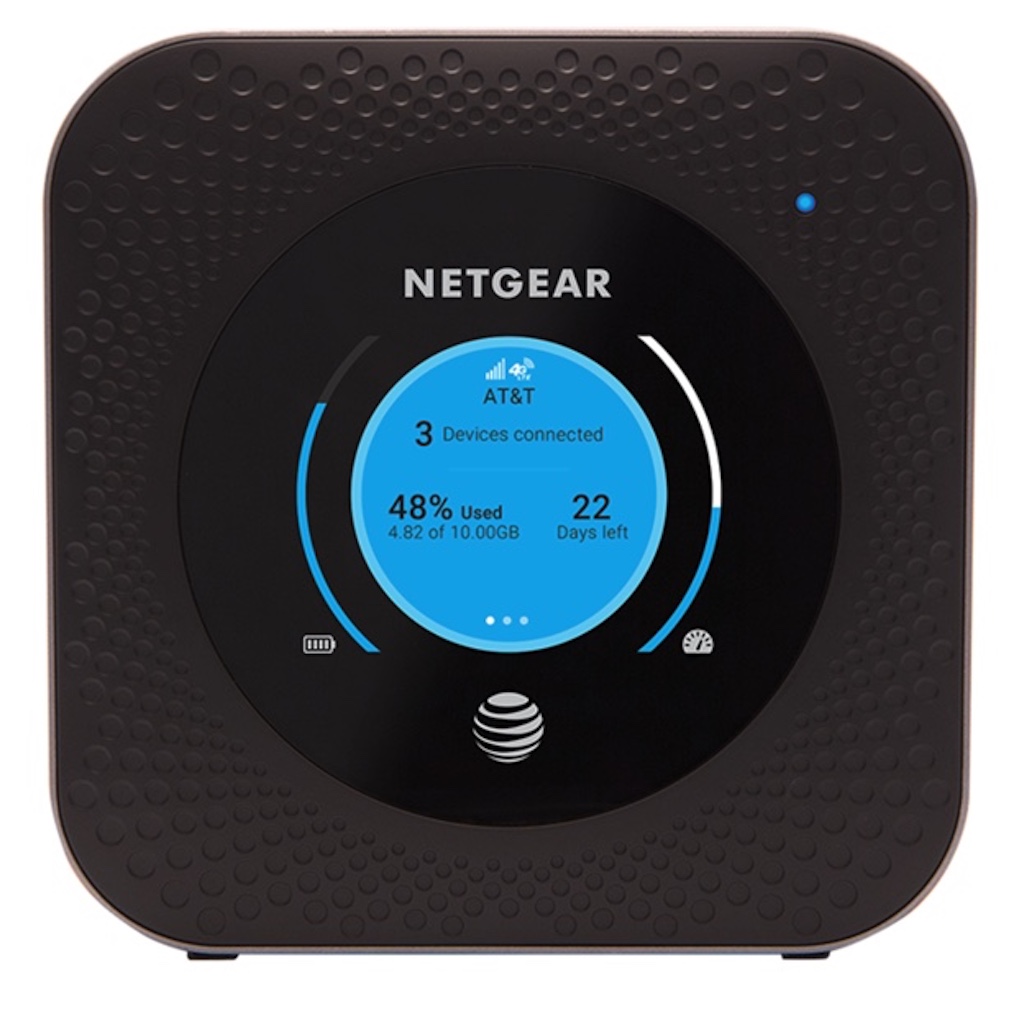
BUY NOW $249.99.
3. Best for T-Mobile service areas
If T-Mobile is your only choice, then honestly, we recommend that you simply use your cell phone’s native hotspot capability for the best internet access outdoors.
T-Mobile is still in the process of integrating Sprint’s network and has plans for a 5G rollout. In the meantime, they seem to have consciously exited the hotspot market. They do sell a product. However it is very old, has terrible battery life – and most importantly is extremely slow.
How to get the best internet access outdoors
That’s it! What you need to know to about how to best access the Internet with a strong WiFi signal, perhaps via a hotspot, while working (or chilling) outdoors. So pack up your laptop or your smartphone, and let’s go! Don’t forget the sunscreen.
join our community
For access to insider ideas and information on the world of luxury, sign up for our Dandelion Chandelier Newsletter here. And see luxury in a new light.

A fan of remote nature travel, Tomas enjoys the dichotomy of the good life in harsh settings, whether it is scuba diving off a decommissioned deep-sea oil platform in the Celebes Sea or reading a good book in a remote desert resort in Utah. He likes to keep his possessions to a minimum, and is thus a huge fan of the power of technology and is very particular about finding well-designed items that are built to last. Tomas majored in English at Harvard, and is making a career in IT. He lives in Chicago with his wife and 4-year-old son.








